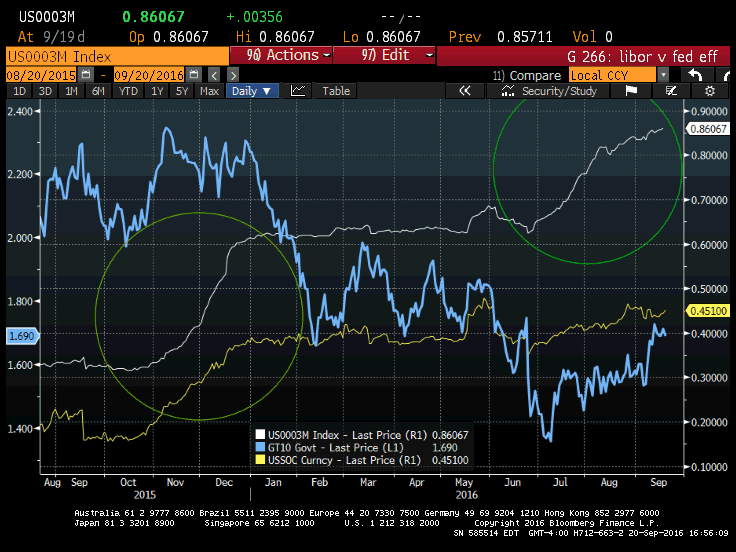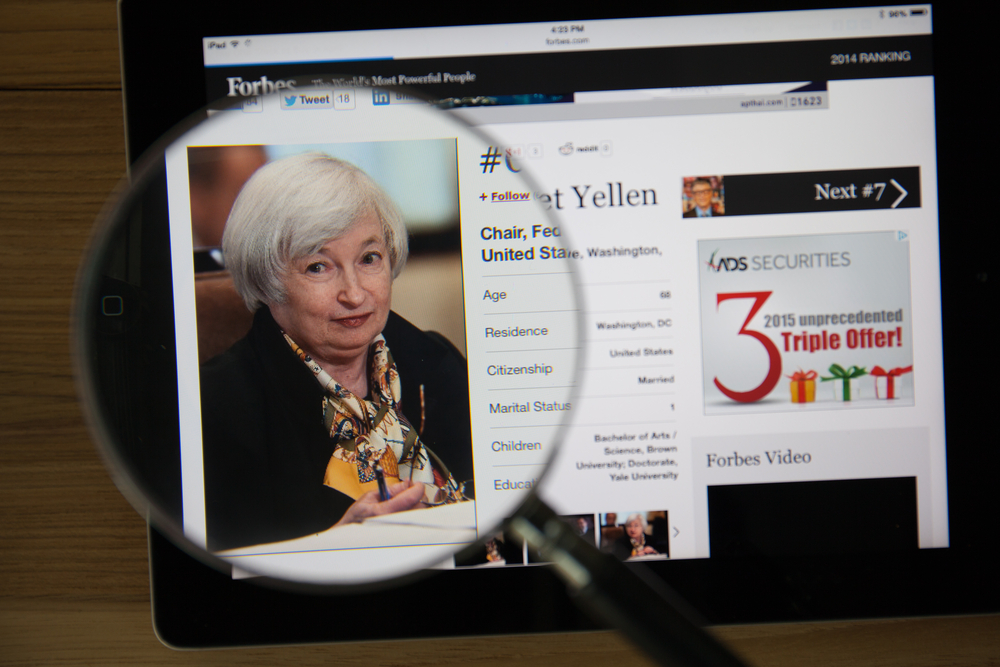One official hike last December, one stealth hike over the past 3 months
On Wednesday the FOMC meets. More importantly, the Bank of Japan meets, and there’s considerably more uncertainty about the policy path regarding that meeting. However, since the result of the BoJ meeting will be known by the time of publication, let’s stick with the Fed. I don’t expect any change in rates and the October FF contract at a price of 9957.0 is only pricing odds of about 15pct for a hike. However, some big institutions inexplicably still think the Fed will move in order to maintain its “credibility”. I hate to say it, but that train has sailed. In any case, consider the chart below. There are three lines on the chart, which begins in August of last year.
The blue line is the ten year treasury yield. The white line is three month libor. And the yellow line is the 3 month OIS swap.

One year ago in September the 3m Libor rate was fairly steady at 33 bps. By November, the rate began to push higher, as the market anticipated (partially due to Fed guidance) that there would be a hike in December. The actual meeting and rate hike was on Dec 16. By the end of the month and into January, libor settled into its new level, around 62 bps. However, starting in June, libor again started to march higher (2nd green circle), from 62 to the current level of 86, a move of just under 1/4 pct. Is the market again anticipating a Fed hike? Not really. The big catalyst for the rise in libor this time is Money Market Reform regulation, which caused a shift in institutional money market investments from prime funds which hold Commercial Paper etc, to safer government funds. How can we tell? Because the OIS swap, which is based on Fed Fund effective rate, also was rising in Nov/Dec of last year, while this year is has only moved up about 1/5th as much as the Libor rate.
If there’s already been an adjustment, does the Fed need to hike now? Probably not. The recent rise in three month libor has been a stealth hike.
Now let’s consider the ten year yield. In Sept 2015 its average yield was around 2.10%. In January, after the hike, the yield plunged below 1.7%, right around its current level. In other words, the curve flattened quite a bit in the first half of the year. However, the ten year rate has been moving higher over the past two months, from just under 1.4% to its current level near 1.7%. This move should provide comfort to the Fed, in that it reflects the possibility of increased inflation expectations. Therefore, the Fed should hold off on any move at this meeting, and instead provide guidance for another move in December. In this way, a continued gradual rise in longer term yields can signal increased inflation expectations, in accordance with the Fed’s stated goals towards rate normalization.
Alex Manzara




